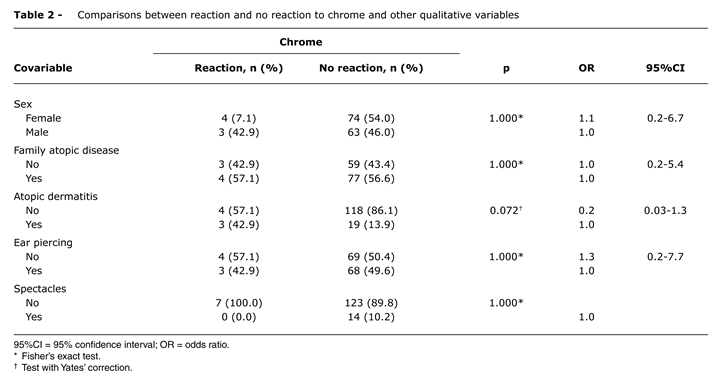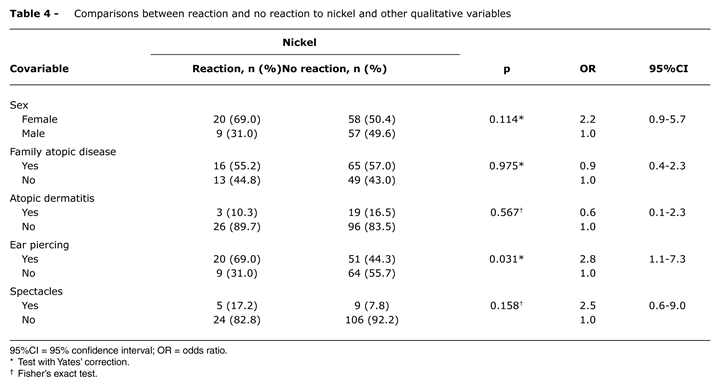OBJECTIVES: To determine the prevalence of metal contact allergy among the children seen at a health center and to characterize children with metal allergies in terms of risk factors. METHODS: This was an uncontrolled cross-sectional study undertaken at a health center in Belo Horizonte, Brazil. Children aged from 0 to 12 years were recruited when they presented at the health center for routine pediatric consultations and were given contact tests for chrome, cobalt and nickel. Statistical analyses were conducted on test readings taken at 96 hours. Results classed as weak (+), strong (++) or extreme (+++) were defined as "reaction," while those classed as doubtful, negative or irritant were defined as "no reaction." RESULTS: A total of 144 children completed the study protocol. Of these, 4.9% exhibited a reaction to chrome, 9.7% to cobalt and 20.1% to nickel. Patients with pierced ears were more likely to react to nickel than those without pierced ears (p = 0.031 and odds ratio = 2.8). CONCLUSIONS: In view of the current tendency for the prevalence of nickel allergy to increase, parents should be warned about its association with ear piercing. Further studies are needed to determine the ideal age for ear piercing and the ideal materials for earrings.
Cobalt; child; chrome; contact dermatitis; hypersensitivity; nickel




